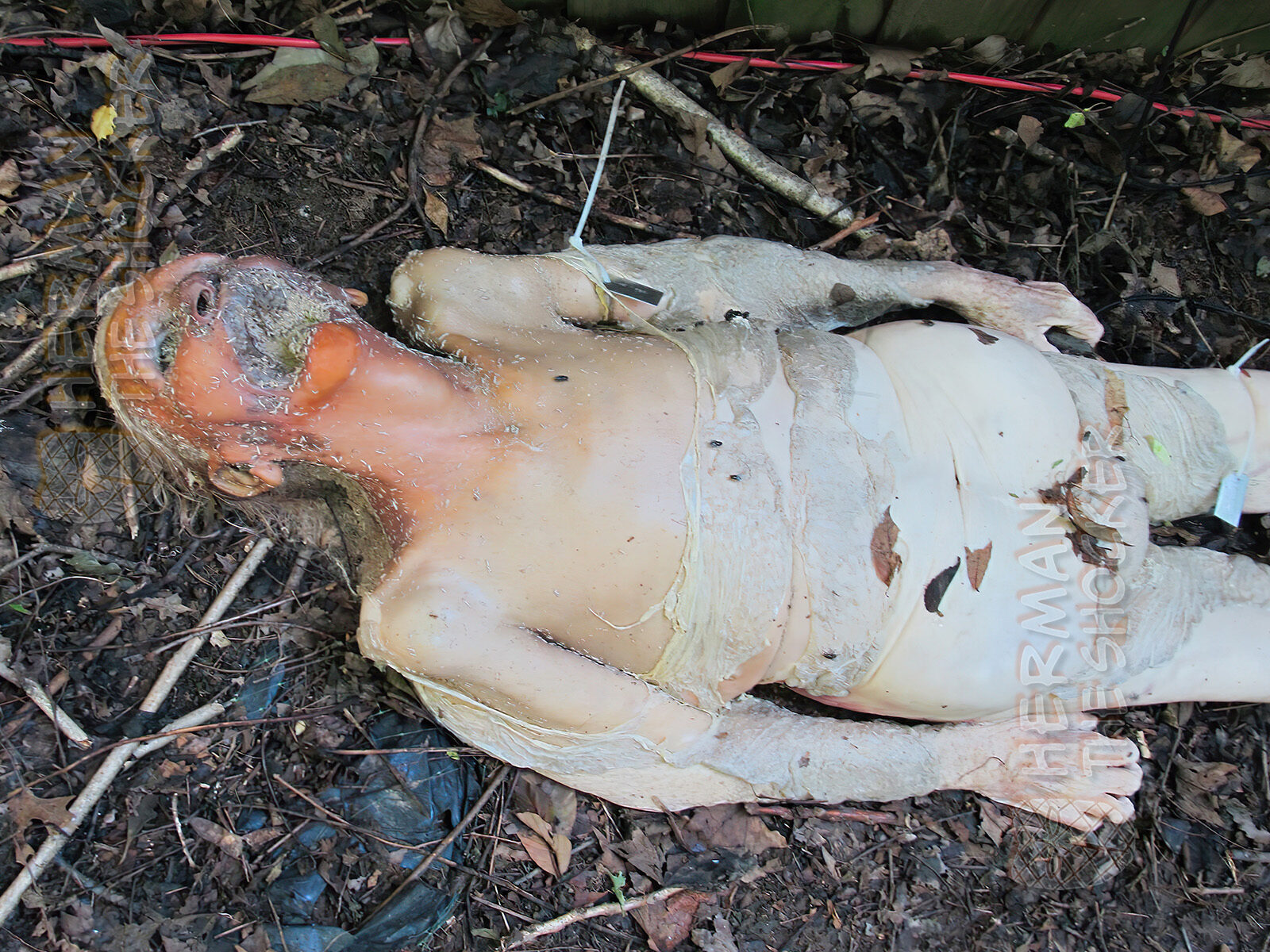Decomposition studies have elucidated many different factors affecting the rate and process of decomposition. However, no study has previously investigated the potential effects of posture on the decomposition process, whether the upright posture affects the rate of decomposition. This research project was conducted at the Anthropological Research Facility at the University of Tennessee in Knoxville from June 16, 2011, to August 16, 2011.
Methods and Materials
The facility is located in an area that is approximately 2.5 acres and is surrounded by a large wooden fence and some wire fencing to prevent extreme amounts of scavenging by large carnivores such as wolves and other carnivorous predators that may be found in the East Tennessee woodland area. The study included three, fresh cadavers. The differences between individuals were kept to a minimum to prevent extraneous decompositional differences from being a factor in the study. Each individual was from the same ancestry and same age group.
Two cadavers were female while the third was a male. The difference between sexes should not have affected the decomposition rate since males and females have been shown to decompose at a relatively same rate. Each cadaver was placed in a different upright position. The first body was sat against a wall made of plywood. The second body was sat in a basic, blue camping chair that had armrests. The chair was nailed into the ground using camping stakes so that the chance of the chair tipping would be kept at a minimum. The third body was used as a control for the experiment. The utilization of at least two different sitting positions was used to help determine whether a chair may affect the decomposition process and whether any amount of elevation from the ground affected the way in which the bodies decomposed.
Before being placed, each body was kept in the freezer to slow down the decomposition process before placement. All three bodies were kept in a freezer at the Anthropological Research Facility for at least a month before placement, so the internal temperature of each individual should have been approximately the same once exposed to environmental elements. The bodies were allowed to thaw for one day prior to placement to allow for each body to be positioned in the individual and different upright postures. Once placed, the bodies were monitored on a daily basis by the researcher. Pictures and notes were taken describing and detailing the general rate of decomposition and any major differences or peculiarities. The bodies were left exposed and undisturbed for a period of sixty days. The pictures and notes were taken at approximately mid-afternoon every day.
–
Individual 1 did not show significant skin slippage or active larvae until day three of the project and remained categorized as fresh. On day three, color change, skin slippage, and maggots were apparent. Maggot masses were visible in the face, hair, and pubic area. By day five, the body showed signs of high dehydration with extreme discoloration. There was no significant bloating occurring, but the first signs of skeletonization were occurring at the occipital area of the skull. By the end of the first two weeks, Individual 1 was fairly dehydrated and discolored. Throughout weeks three and four, flies and beetles were seen around the body, but no major maggot masses reappeared. At the start of the fifth week, scavenging was noted on Individual 1. The skull had been pulled away from the body exposing more of the upper torso and exposed skeletal elements. Individual 1 continued to dry out throughout the rest of the sixty day period.
Individual 2 did not exhibit any major signs of deviating from the normal decomposition process. While some minor differences were not noted during the two months, none of the differences seemed to have a major effect on the process. Individual 2’s hair mass did stay attached for a much longer time than the control and the individual saw more skeletonization occur in the areas that were in contact with the ground, especially in the lower arms and in the legs. The skeletonization that was seen was never complete, and the individual dried and mummified between weeks 2 and 8.
Individual 3 experienced much greater skeletonization and a greater amount of insect activity was visible on this individual for the entire two months. The difference in insect activity between Individual 3 and the other two bodies can be attributed to the puddle seen in the camping chair. While the puddle did go through multiple rounds of drying and then reappearance, it provided a better breeding ground for insects. The puddle which was a mix of organic, decomposition material, and rainwater attracted more bugs and provided a safe haven for many of the insects that may have remained within the body.
Discussion
Comparative analysis between individuals shows that while some decompositional differences are seen between the bodies, most of these differences are limited in their effect on basic decomposition categorization of the individual. The process of decomposition for each individual was an ongoing process but mainly ceased after the first two weeks of exposure. While some minor differences were noted between the bodies, the body coloration, amount skeletonized, and the insect activity, major differences were less notable.
The use of actualistic decomposition studies is important to enhancing the knowledge of forensic experts. Although previous research has helped to illuminate the different effects a specific variable may have and the possible variations from what is expected, the further study of other aspects and variables that may affect the taphonomic processes studied by such experts is essential in developing and furthering the knowledge and information garnered by such research.
Latest posts



























